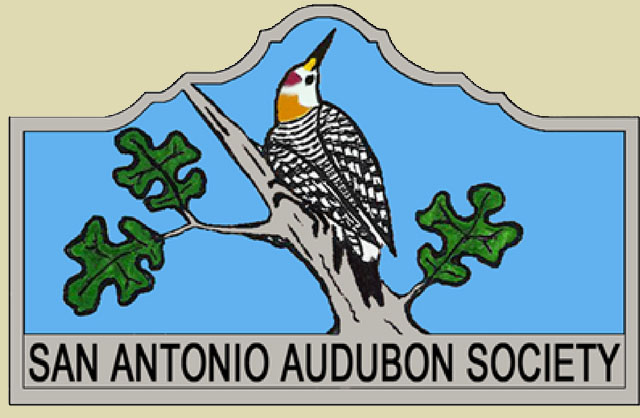Birding Articles
“I think the most important quality in a birdwatcher is a willingness to stand quietly and see what comes. Our everyday lives obscure a truth about existence - that at the heart of everything there lies a stillness and a light.”
Birding in San Antonio
San Antonio, a Texas Bird City. The Texas Bird City designation was created by Texas Parks and Wildlife and Audubon Texas to help communities protect birds and their associated habitats in the areas they live and work. San Antonio received certification in January of 2021 due to its commitment to bird conservation and environmental stewardship. Bexar Audubon (a separate organization not affiliated with SAAS) was instrumental in getting San Antonio this designation. Official information about the program can be found here:https://tpwd.texas.gov/wildlife/birding/bird-city-texas.
The prevalence of birds in San Antonio is due to several factors. The city is located at the confluence of several different ecological regions. This positioning results in a large diversity of habitats within a relatively small area resulting in an increase in the number and types of birds (species) that can be found here. Also contributing to the abundance of bird life is San Antonio’s excellent system of parks, greenways and other natural spaces, which help provide refuge to wildlife among the large concentration of buildings and housing common to any urban area. In addition to these factors, San Antonio sits squarely within the Central Flyway, a migratory corridor for birds. This fact brings numerous species of bird through our area in both Spring and Fall. Many of these species only pass through and do not nest nor winter here. Nonetheless, these migratory species can stop over to rest and refuel during their migratory journey for several days or more at a time. All of these factors have resulted in over 400 species of bird being recorded in Bexar County. These include birds that nest here, birds that winter here, and birds that pass through during migration.
By and large, the types of birds found in San Antonio will be those that can be seen in the Southeastern United States. However, we are also home to numerous species that are found in the Western United States and several that are only found in Texas. The best example of the latter is the endangered Golden-Cheeked Warbler which nests in several parks around town including Friedrich Wilderness Park, Crownridge Canyon Park, and Government Canyon State Natural Area. Birds can be found virtually anywhere in the city. Backyards, empty lots, and even the cityscape itself is home to birds in addition to the parks and greenways. The top hot spots to see birds in San Antonio are Mitchell Lake Audubon Center, the San Antonio Botanical Garden/Brackenridge Park, the power plant lakes in the SE corner of the county (Braunig and Calaveras) and Government Canyon State Natural Area.
There are many things people can do to support birds. These include keeping cats indoors, planting native plants in the yard, reducing pesticide and herbicide use around the home, purchasing foods such as coffee that are sustainably sourced and do not contribute to deforestation, and simply observing and learning about the bird life around them. — Zachary Tonzetich
On the Diversity of Avifauna in Bexar County, Texas -- an essay by Steve Hawkins
Birding Castroville -- a town to the southwest of San Antonio with great birding spots (and more!) by Georgina Schwartz
Birding North-East Bexar County: The Back Roads by By Richard C. Sims
Species Specific
Species Profile: Eastern Screech-Owl (Or: All you wanted to know about our screech-owls but were afraid to ask) by Jack Eitniear
Swamp Sparrow -- find and identify it in Bexar County by Bob Doe
Dowitcher Dilemmas-- tips for identifying Short-billed and Long-billed Dowitchers by Drs. Lorna and Dodge Engleman
General Birding
Ten Life Birds -- a spring trip to AZ, CA, and CO by By Shirley Bartels
How Many Birds are in Your Yard? -- Cardinals and Hummingbird numbers may surprise you. By Glenn Swartz
Soft-Part Coloration -- an explanation of this breeding bird phenomena by John Arvin
Copyright ©2005 San Antonio Audubon Society. Permission is granted to other nonprofit organizations to reprint articles, unless otherwise noted. Reprints must refer to the originating web site or newsletter and give credit to San Antonio Audubon Society and the specific author.
